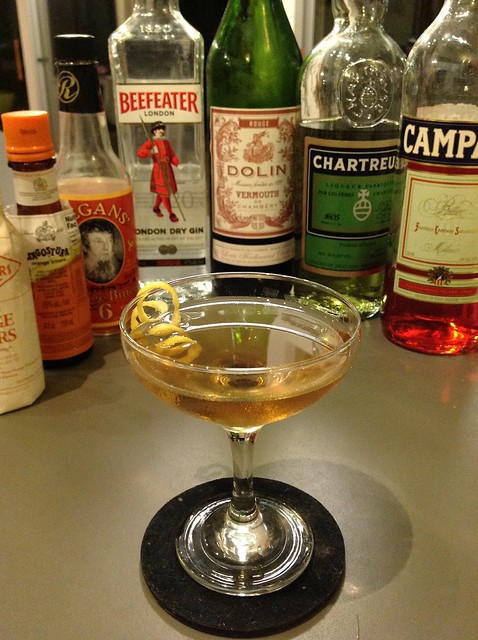The Tailspin is another cocktail from the Death & Co Cocktail Book, this one from the Classic & Vintage section.
I realized while making it that it’s a Bijou (gin, sweet vermouth, green Chartreuse, orange bitters) with a Campari rinse.
At Death & Co, they make it relatively Chartreuse- (and vermouth-) heavy with 1.5/1/1 ratios. I am used to 2/1/1 as in, for example, the Bartender’s Choice version, although historically this may be an equal-parts drink (see Harry Johnson’s Bartender’s Manual), like its younger cousin the Negroni.
I used Dolin sweet vermouth, which is lighter than the Carpano Antica used in the Death & Co version. It’s a pretty drink, although a little busy. You would think that, as a fan of the Negroni and green Chartreuse, I would be all over this one. But Chartreuse is richer than Campari, so the cocktail ends up being a little over the top for my taste buds. And there is a lot of Chartreuse in that cocktail.
All in all, it’s best enjoyed as a post-dinner drink.





